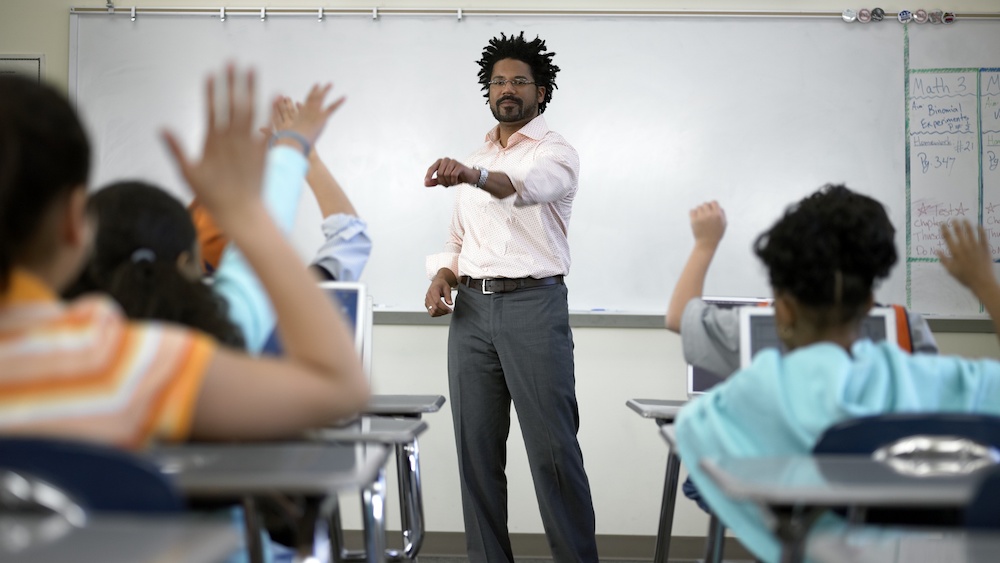If you’re interested in sharing your opinion on any cultural, political or personal topic, create an account here and check out our how-to post to learn more.
____
“I feel better because I got that off my chest, Mr. Townsend.”
A quote from my student, Josue, on January 7, 2021.
The day after the Capitol of the United States was attacked by Trump supporters, I had a fully planned math lesson prepared for my students to engage with. Being a non-traditional educator teaching in non-traditional times, I decided to continue to commit to non-traditional practices — and not teach math for a day in order to hear and increase the volume of my students' voices.
I teach in a school where the racial demographics for students are 73% Hispanic, 18% Black and 9% other. As a Black male educator who is active in his community, seeing the Capitol defaced because “the election was rigged” frustrated the hell out of me. When George Floyd was murdered in summer 2020 (mid-pandemic) by police in Minneapolis, Black Lives Matters (BLM) protesters began peacefully protesting social injustices and brutality on Black and brown bodies. BLM protestors were met with tear gas, rubber bullets and tanks — while, on the other hand, armed and angry Trump supporters were basically ushered into the Capitol unharmed.
We live in two different Americas. My 7th grade students even noticed the difference.
One of my students stated, “People are unfair because they treat white people differently than people of color. For example, if they look at a white man with a gun, it is only for sport, but if they look at a man of color with a gun, it is a gangster or a thug.”
As an avid advocate for our youth, I could not let this moment pass without doing a pulse check. A really great educator is one who hears the voice of their students, amplifies their voice and allows them to process any and all situations from their perspective. As you are reading every word of this article, I would like for you to envision 120 students’ voices speaking, and intellectually pushing not only themselves, but their teacher, Mr. Townsend (me) as well.
Below are verbatim quotes from my students’ reflections:
“What happened yesterday was a perfect example of white privilege. People literally broke into the Capitol and committed treason and domestic terrorism.”
“Let’s make a video saying how this is affecting the world and people's health.”
“I'm glad that we actually have a teacher that actually educates us about this kind of stuff, because most teachers — not all — just teach what they are supposed to and don't talk to us about real life. So, thank you.”
“Let’s write letters to show them how it is affecting our education.”
To help your students process what’s happening, here are a few tips I found helpful:
1. Genuinely ask your students, “How are you doing?” You can utilize electronic poll features, if necessary.
2. Intentionally scaffold your questions and let them lead the conversation.
3. Encourage participation, but allow it at the pace of your scholars.
4. Affirm the humanity of all your scholars; love on them.
I did not teach content on this particular day. I instead taught life. This is truly what SEL (Social Emotional Learning) is all about.
My hope and goal is that this conversation with my students will empower them to be critical thinkers and to not engage in heinous activities, such as what happened at our nation’s Capitol. My hope is that teachers do not shy away from difficult conversations because of our students’ age, but rather lean into them more.
Sometimes teaching life needs to supersede teaching to a test, and that’s OK. I am positive my students will remember this conversation rather than a volume formula I had planned to teach. They can directly apply this dialogue to their lives. For teachers to position themselves as learners while having life discussions, it allows the teachers to be students. That is the hack to good teaching.

